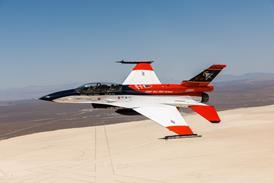Tecnam has received US Federal Aviation Administration certification for its P2006T four-seat Rotax-powered twin, a development the company says could spark new interest in the small-aircraft air-taxi market.
Many customers did not want to fly in small single-engined aircraft, says Ben Young, vice-president of business development and marketing with Tecnam North America, referring to the small aircraft transport system model that Greenville, South Carolina-based SATSair had tried to implement with four-seat single-engined Cirrus SR22s.
"With the P2006T, you have a similar price point and performance of the Cirrus, but with another engine," he says.
In its five years of operation, SATSair had built a fleet of 26 aircraft that flew 60,000 flight hours and 21 million revenue seat kilometres. However, the company went out of business in October 2009.
Tecnam North America, the Italian airframer's marketing and distribution operation, is selling the P2006T for $425,000 with an analogue instrument suite and $484,000 with a Garmin G950 integrated flightdeck.
According to FAA certification documents, the unpressurised, normally aspirated aircraft has a maximum cruise speed of 135kt (250km/h) and altitude of 14,000ft (4,270m) and is not certificated for flight into known icing. The normally aspirated SR22 GS model, priced at $441,000, has flight into known icing certification, a maximum altitude of 17,500ft and maximum cruise speed of 204kt.
Young says Tecnam North America has "several aircraft" inbound from Italy, two for flight schools and one for a surveillance duty with a para-public operator.
"A whole bunch of people said they'd get back to us when the aircraft became certified," says Young. "In the next three weeks, we will have a good understanding of our tempo for 2011."
Young says Tecnam has already boosted its production rate to one aircraft every five days.
Tecnam certificated the P2006T with the European Aviation Safety Agency in June 2009 and builds the aircraft in Italy along with several light sport aircraft for the US market.
"Within a couple of years, I wouldn't be surprised if 15-20% of production goes to the air-taxi market in the US," says Young, adding that there may also be a niche market for corporate flight departments looking for "smaller aircraft for specific missions".
Source: Flight International
















